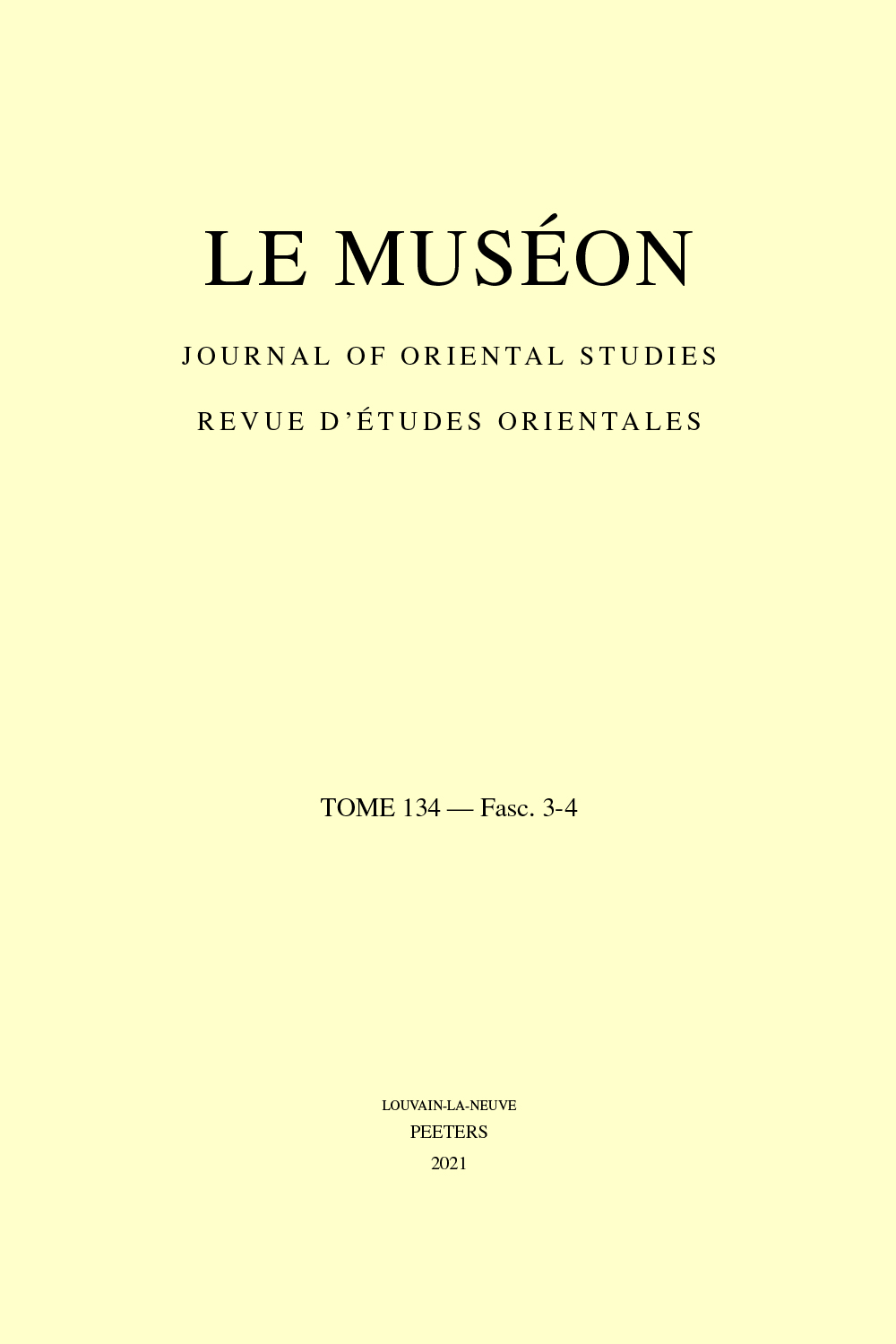 previous article in this issue previous article in this issue | next article in this issue  |

Preview first page |
Document Details : Title: Feuilles de garde syriaques dans la Bibliothèque de Sainte-Catherine du Sinaï Author(s): GÉHIN, Paul Journal: Le Muséon Volume: 133 Issue: 3-4 Date: 2020 Pages: 289-339 DOI: 10.2143/MUS.133.3.3288870 Abstract : Many Sinaitic manuscripts are protected by flyleaves borrowed from dismembered manuscripts written in the different languages used at St-Catherine’s Monastery over the centuries; there is not necessarily a relationship between the language of the flyleaves and that of the body of the manuscript. The present article focuses exclusively on the Syriac flyleaves found in the Greek, Syriac, and Arabic collections of the library. It is a continuation of the investigation we carried out in our 2017 book, which was limited to Syriac parchment manuscripts. In this paper, we examine 32 Syriac fragments from 23 different manuscripts. We identify precisely the texts that these fragments transmit, which are of biblical, patristic or liturgical content, and we propose a dating of their writing (the copies date from the 6th century to the end of the 13th century). The study makes it possible to group manuscripts that have flyleaves from the same manuscript and that were probably bound at the same time. For a more precise dating of the binding operations, however, it will be necessary to examine the bindings themselves, which was not possible within the framework of this article. Nevertheless, it is an accepted fact that most of these bindings were made in the Monastery of St-Catherine itself and reuse fragments of manuscripts that were present on site and discarded to be used as flyleaves or raw material. These fragments sometimes fill gaps in manuscripts that still have a physical existence on the shelves of the library; more often than not, however, they are the last remnants of a wealth of books that has disappeared. |
|


